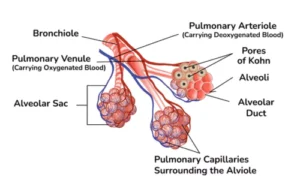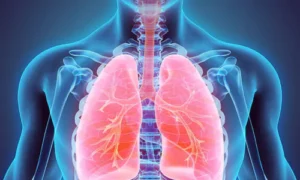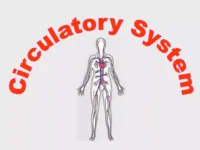Every breath taken is a testament to the incredible complexity of the human body. The respiratory system, a marvel of biological engineering, silently performs its vital function day and night. Yet, many remain unaware of the intricate processes occurring within their chest cavity with each inhalation and exhalation.
From the moment air enters the nostrils to the microscopic exchange of gases in the lungs, the respiratory system orchestrates a symphony of life-sustaining activities. 🫁 But what happens when this delicate system faces challenges? How do environmental factors, lifestyle choices, and genetic predispositions impact our ability to breathe freely? These questions lead us to explore the fascinating world of respiration, from its basic structure to common disorders that affect millions worldwide.
In this comprehensive guide, we’ll journey through the structure of the respiratory system, unravel the mysteries of the breathing process, and delve into the gas exchange mechanism that keeps our cells oxygenated. We’ll also examine the factors affecting respiratory efficiency and shed light on common respiratory disorders that can disrupt this essential bodily function. Prepare to take a deep breath and dive into the captivating realm of the respiratory system!
1. Structure of the Respiratory System

A. Upper respiratory tract components
The upper respiratory tract consists of the nose, nasal cavity, pharynx, and larynx. These structures play crucial roles in filtering, warming, and humidifying incoming air. The nose and nasal cavity trap particles, while the pharynx serves as a passageway for both air and food. The larynx, or voice box, houses the vocal cords.
| Component | Function |
|---|---|
| Nose | Filters air |
| Nasal cavity | Warms and humidifies the air |
| Pharynx | Passageway for air and food |
| Larynx | Houses vocal cords |
B. Lower respiratory tract components
2. The Breathing Process
Inhalation mechanics

Inhalation begins as the diaphragm contracts and moves downward, increasing the thoracic cavity volume. Simultaneously, the external intercostal muscles contract, lifting the ribcage. This expansion creates negative pressure within the lungs, drawing air in through the airways.
| Inhalation Step | Action | Result |
|---|---|---|
| Diaphragm contraction | Moves downward | Increases thoracic volume |
| Intercostal muscle contraction | Lifts ribcage | Expands the chest cavity |
| Pressure change | Negative pressure in the lungs | Air is drawn into the airways |
Exhalation mechanics
Exhalation is largely passive, relying on the elastic recoil of lung tissue. As the diaphragm and intercostal muscles relax, the thoracic cavity volume decreases. This compression increases intrapulmonary pressure, forcing air out of the lungs through the airways.
3. Gas Exchange Mechanism
Alveoli structure and function

Alveoli, the tiny air sacs in the lungs, play a crucial role in gas exchange. These microscopic structures have thin walls and are surrounded by capillaries, maximising the surface area for efficient gas transfer. Their elastic nature allows for expansion during inhalation and contraction during exhalation.
| Feature | Function |
|---|---|
| Thin walls | Facilitate rapid gas diffusion |
| Surrounded by capillaries | Enable efficient blood-gas exchange |
| Elastic nature | Supports breathing mechanics |
Oxygen absorption process
The oxygen absorption process occurs through diffusion across the alveolar-capillary membrane. As oxygen-rich air enters the alveoli, it moves from an area of high concentration to a low concentration in the blood. This passive process is driven by the partial pressure gradient between alveolar air and capillary blood.
4. Factors Affecting Respiratory Efficiency

A. Lung capacity and volume
Lung capacity and volume play crucial roles in respiratory efficiency. These factors determine the amount of air an individual can inhale and exhale, directly impacting oxygen uptake and carbon dioxide removal. Consider the following table:
| Lung Measurement | Description | Average Volume (ml) |
|---|---|---|
| Tidal Volume | Air inhaled/exhaled during normal breathing | 500 |
| Vital Capacity | Maximum air exhaled after deepest inhalation | 4,000-5,000 |
| Total Lung Capacity | The maximum air the lungs can hold | 6,000 |
B. Air quality and pollution
Air quality significantly affects respiratory efficiency. Pollutants can irritate airways, reduce lung function, and increase susceptibility to respiratory disorders. Common air pollutants include:
- Particulate matter
- Ground-level ozone
- Nitrogen dioxide
- Sulfur dioxide
5. Common Respiratory Disorders

Asthma and its effects
Asthma is a chronic respiratory condition characterised by inflammation and narrowing of the airways. It affects millions worldwide, causing symptoms such as wheezing, coughing, and shortness of breath. Triggers vary among individuals but may include:
- Allergens (pollen, dust mites)
- Irritants (smoke, strong odours)
- Exercise
- Stress
| Asthma Severity | Symptoms | Treatment |
|---|---|---|
| Mild | Occasional | Rescue inhaler |
| Moderate | Daily | Inhaled corticosteroids |
| Severe | Persistent | Combination therapy |
Chronic obstructive pulmonary disease (COPD)
Conclusion
The respiratory system plays a vital role in sustaining life by facilitating the crucial processes of breathing and gas exchange. Through its intricate structure and efficient mechanisms, it ensures that oxygen is delivered to cells throughout the body while removing carbon dioxide. Understanding the components of this system, from the airways to the alveoli, provides insight into how humans and other organisms maintain their respiratory functions.
Maintaining a healthy respiratory system is essential for overall well-being. By being aware of factors that can affect respiratory efficiency and recognising common disorders, individuals can take proactive steps to protect their lung health. Regular exercise, avoiding pollutants, and practising good hygiene are simple yet effective ways to support optimal respiratory function. As research continues to advance our understanding of the respiratory system, new treatments and preventive measures may emerge, offering hope for those affected by respiratory conditions and improving quality of life for all.






